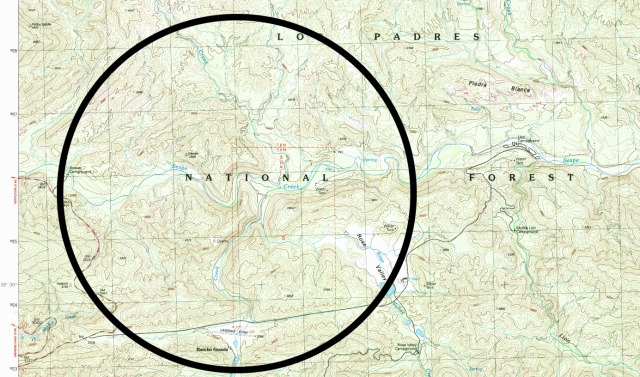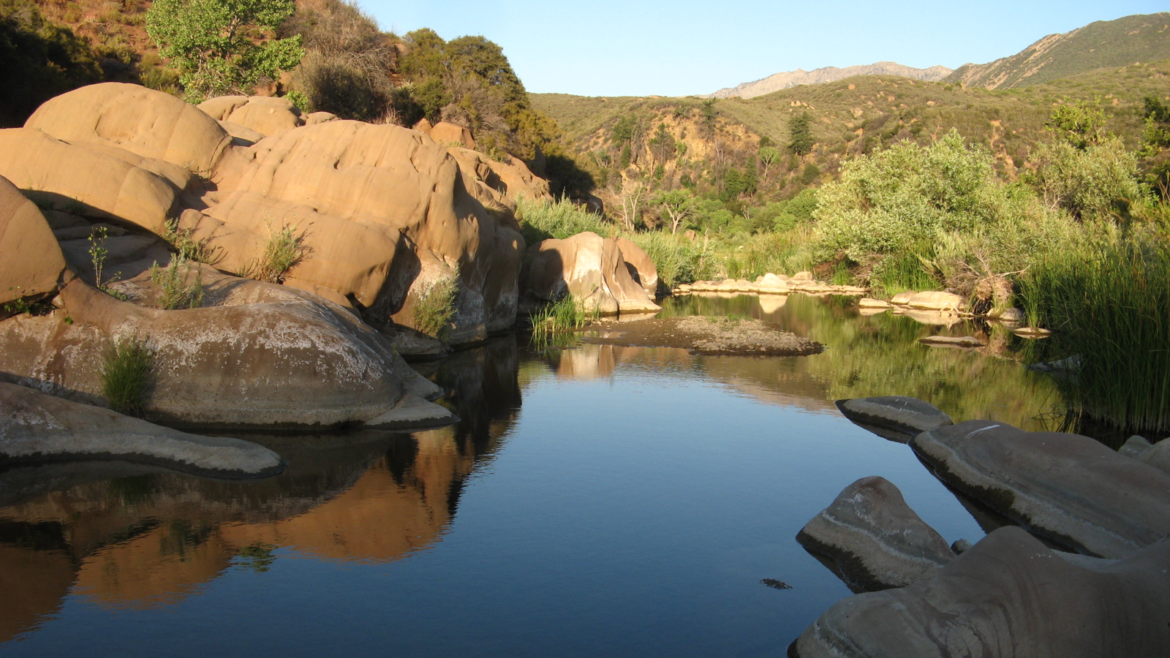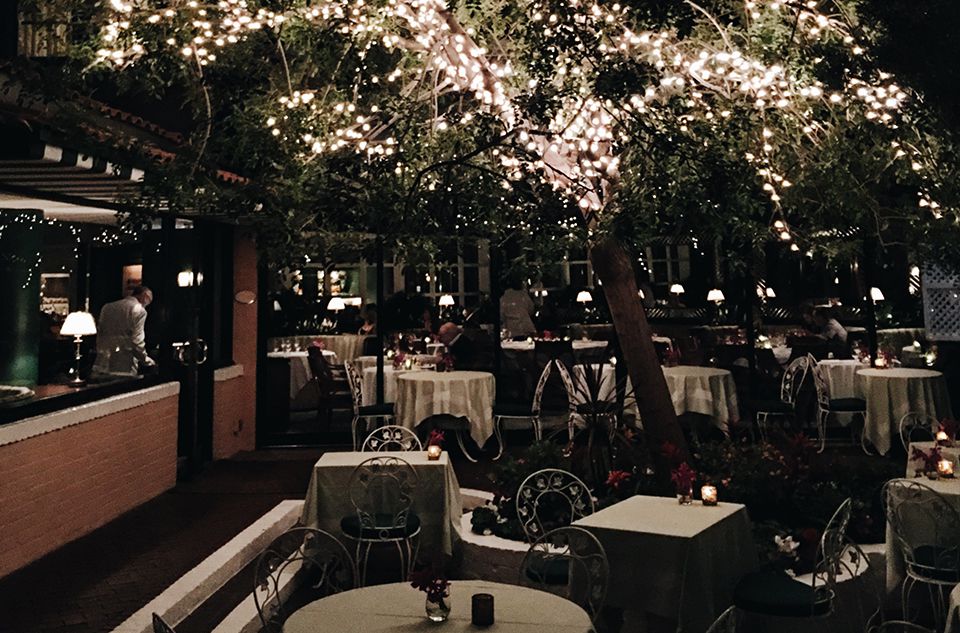(Note: This post is ported in from one that sprang from an ask-box question at Tumblr, and is reproduced here for those who don’t care to deal with Tumblr’s data-privacy requirements. [And who could blame them.] The question that came up is this:)
severeannoyance asked:
My Enemy, My Ally has been one of my very favorite books ever, since I first read it as a Star Trek-obsessed eleven year old and fell in love with it (and Ael especially. I wanted to be her when I grew up, and now I’m technically grown up and still want to be her). My copy, the cover replaced multiple times, went on many adventures with me, including backpacking in Alaska and paleontology fieldwork in the northern Sierra Nevada, until it wandered away with an unscrupulous housemate in grad school. I just reread it and realized that the Sespe is in my figurative backyard. The Los Padres National Forest and associated wilderness areas is a place I’ve been enthusiastically exploring in the last few months while pandemic stir crazy and avoiding humans, and I love it dearly.
As a result, I was wondering if the place where Jim hangs Ael’s pennon is based on a real place (and if that place is within the condor preserve and not somewhere a member of the public can/should be going…! I’ve no desire to intrude where I’m not wanted!)
I’m pushing deadline at the moment, but this is such a great question that I want to take a moment to deal with it.
My one and only visit to the Sespe Condor Preserve—or Condor Sanctuary, as it is now—would’ve happened in mid-1976 sometime. I was living in Northridge in the San Fernando Valley, working as David Gerrold’s assistant, being then in the process of giving up private duty nursing as I started to contemplate the possibilities of becoming a writer. (While I was writing then, as I had been doing since I was eight, I wouldn’t be sold-for-publication for another year yet. The early Middle Kingdoms material was in the process of coalescing into its first fully-realized work, The Door into Fire. Later on, one of the doors [chuckle] that Fire and its ensuing Astounding Award nominations would open for me was the one to the Pocket Books editorial offices that were handling the Star Trek novels. So we see, once again, how everything is connected.)
There came a point in mid-’76 where I just wanted a little bit of time off. Condors were on my mind, for whatever reason; and the Angeles National Forest, and Sespe, weren’t all that far away from Northridge as the crow flew. I didn’t have a car, though, so as I started my planning for what would be a four- or five-day hiking trip, I asked David if he’d be willing to run me up Route 33 north of Ojai, and drop me off at some likely trailhead. From there, I’d hike into the wilderness for a couple days and a half, pause, and then turn around and go back to where I started. Then he’d meet me at a prearranged time, pick me up and take me back to Northridge.
Examined from this end of time, this was plainly one of those things you do when you’re in your mid-20s and perceive yourself not only as a candidate for the One Of The Smartest People In The Room award, but also as more or less indestructible, or at least relatively impervious to harm. (eyeroll) Whatever. I got together my backpack, my hiking boots, a good supply of trail rations/camping food, a tiny little camping stove, a terrific sleeping bag, and all the other necessities (especially the USGS maps). And then the chosen day in midsummer came along, and I set out.
Sespe Creek, on which my trip centered—at least, on one of the western parts of it—is one of the last truly wild rivers left in California. I’ve since hiked and camped other wilderness, but there have been few others (except maybe the Swiss National Forest) that exude the same general atmosphere of Wilderness Doesn’t Give A Fuck What Happens To You as the Sespe Creek gorge does. You have to be very careful how you go. That said, my experience during those five days was absolutely nothing like the experience of (to pick a random example) these guys. That may be because there was a lot less testosterone involved. I honestly have no way to explain the discrepancy. Maybe it’s just kindest to say that not all hikes are good hikes, and leave it at that.
What I did have was five days of extraordinary peace, quiet—in terms of the kind of quiet that you get out in the wilderness—and relatively little excitement. Yeah, sure, there was the night the bear tried to eat my backpack. (Or at least what was in it. It had no luck with that; I knew my way around bear bagging, and everything of any interest was hanging by a long rope from a nearby piñon pine. The bear had no interest at all in me, on the ground, in my sleeping bag, ten feet away… a fact over which I remain relieved to this day.)
Things I didn’t see far outnumbered the things I did… either because I was making too much noise accidentally, or because I was making too much noise on purpose. I did not see any rattlesnakes, which frankly in that neighborhood is kind of extraordinary. I did however hear plenty more bears, numerous mountain lions, and more kinds of yelling raptors than I could possibly identify. I saw more bears, though always at a distance. (But then again I was only ten miles or so from a place clearly labeled on the USGS maps as “BEAR HEAVEN.”) And I did not see any other human beings whatsoever unless I was actually walking on a road… which suited me fine.
I did, however, finally see a condor: exactly one. I almost missed it. What alerted me was a massive shadow passing over me, like a cloud coming between me and the sun. It made more noise than a cloud, though: it was so quiet that afternoon that the wind passing through the “cloud’s” primary feathers was clearly audible. I looked up, and there it was. It cocked an eye at me as it passed over, sized me up, visibly went “Ehh…”, and flew on over the next hill and out of sight.
That was enough for me. I’d seen what I’d come to see, and later that afternoon made my midway camp before turning around to head home.
About Ael’s tree: even at this distance in time, memory of a real thing has a different tang or “taste” in the mind for me than the memory of something I made up for literary purposes. (Though some of those memories can get pretty intense or specific, I can reliably tell them apart.) And the memory, especially the visual memory of the tree, tastes real.
My guess is that I didn’t follow the Sespe Creek gorge proper much further than ten miles or so east before doubling back. So there’s no telling whether or not the little watercourse where I saw the tree was the Creek proper (which gets surprisingly narrow sometimes) or one of its many tributaries that run down to it from the Angeles National Forest’s hills to the north and the Topatopa Mountain and Devil’s Heart Peak area to the south and east. All things taken together, the odds are higher that the tree was located overhanging one of the smaller tributaries. If I drew a circle on the map to estimate where I might’ve seen that tree, it would look like this. (Click here for the full-size image on a separate page.)

(The full Lion Canyon quadrangle map can be found here in various formats.) My sorrow that I can’t be more specific.
…That’s such a beautiful corner of the world; a couple of the sunsets I saw there still sometimes illuminate the back porches of my mind. The next time you’re out that way, please greet that space for me, if you would. The odds are low that I’ll ever be there again physically, but I think of it often.


